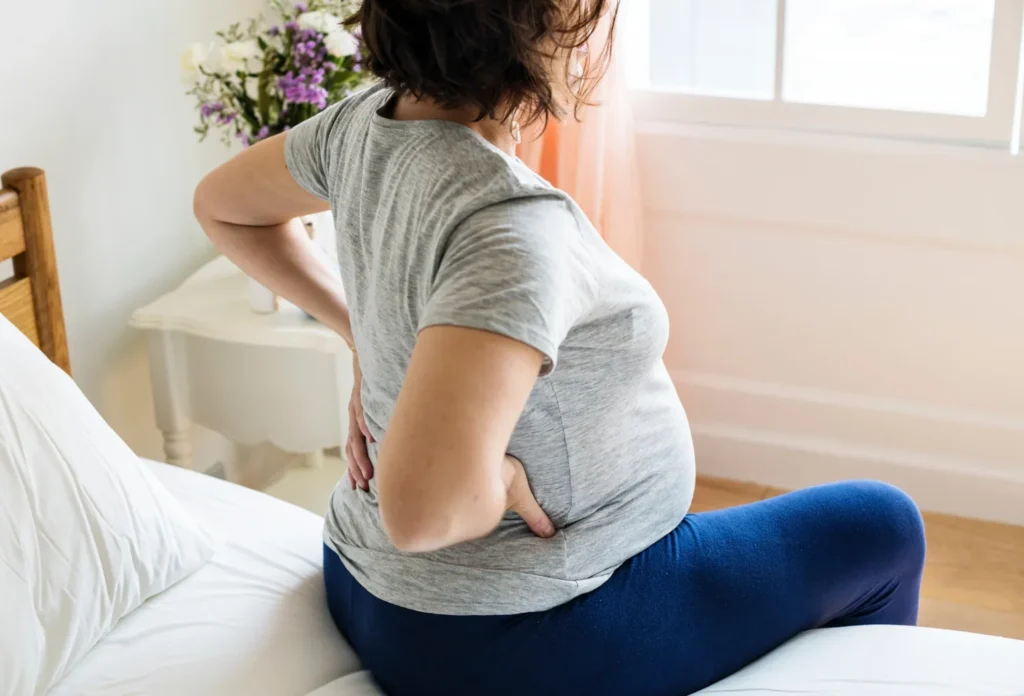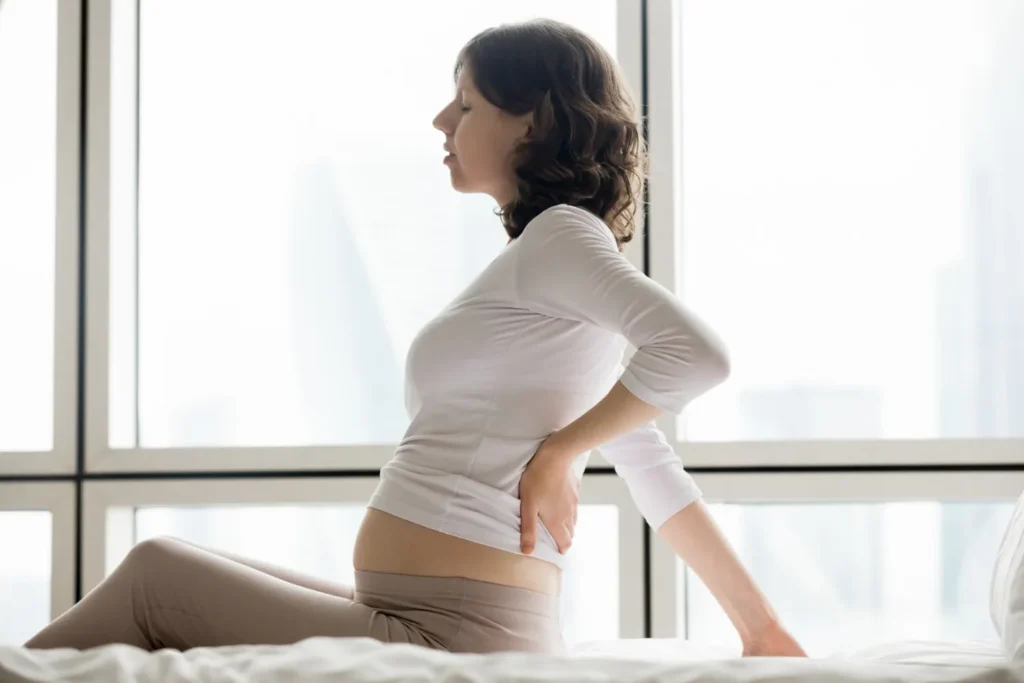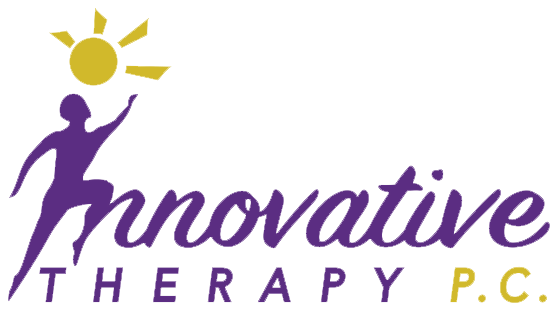Welcoming a new life into the world is an exhilarating experience. Yet, it often comes with its share of physical challenges, particularly back pain, which is a prevalent issue for expectant mothers.
The additional weight and the shifting center of gravity during pregnancy exert considerable stress on the spine, often resulting in persistent discomfort and, in some cases, severe pain that can impair daily functioning.
In this detailed guide, we’ll explore how physical therapy offers a nurturing and effective approach to mitigating pregnancy-related back pain. We’ll discuss the substantial advantages of physical therapy, the risks associated with neglecting back pain during pregnancy, and offer guidance on selecting a proficient physical therapist.
Whether you are personally enduring Pregnancy-Related Back Pain or you’re seeking information for someone close to you, this blog post is tailored to provide essential insights and practical advice for managing back discomfort during this delicate time.
Causes of Pregnancy-Related Back Pain

During pregnancy, a woman’s body undergoes profound transformations that, while preparing for the arrival of her baby, can also lead to various forms of discomfort, with back pain being one of the most frequent complaints. This discomfort typically stems from several interconnected physical and hormonal changes.
- Shift in Center of Gravity: As the baby grows, the center of gravity shifts forward. To compensate, many women unconsciously adjust their posture, often arching their backs, which can strain the lower spine. This shift can lead to a condition known as lordosis, where the spine curves excessively, putting additional pressure on the back muscles and spinal discs.
- Hormonal Changes: Pregnancy triggers the release of a hormone called relaxin, which prepares the body for childbirth by loosening ligaments and joints in the pelvic area. However, this loosening can also decrease spinal support, leading to instability and pain. The effects of relaxin combined with the increased load from the baby can strain the vertebrae and surrounding structures, contributing to discomfort and pain.
- Weight Gain: The typical weight gain during pregnancy is between 25 and 35 pounds, which places significant extra pressure on the spine. This added weight not only challenges posture but also increases the workload on spinal discs and joints, heightening the risk of back pain.
- Postural Adjustments: Pregnant women often change their posture and the way they move, whether it’s standing, sitting, or sleeping. These adjustments can lead to improper alignment, which strains the back muscles further. Continuous standing or sitting without adequate support can exacerbate the strain, making back pain more severe.
Types of Back Pain Experienced During Pregnancy
Back pain is a common ailment in pregnancy, impacting various aspects of daily life and requiring distinct management strategies. Understanding the specific type of back pain can significantly enhance the effectiveness of treatment and relief strategies. Here are the main types experienced by expectant mothers:
- Lumbar Pain: This is the most common form of Pregnancy-Related Back Pain and primarily affects the lower back. It can be exacerbated by prolonged periods of standing or sitting and is often intensified by a lack of proper support pregnancy or poor posture. The pain might feel like a dull ache or a sharp, piercing sensation that makes it difficult to perform daily tasks.
- Pelvic Girdle Pain (PGP): Unlike lumbar pain, which occurs in the lower back, PGP is felt deeper and lower in the pelvis. It can extend from the back of the pelvis to the hips and can even affect the front of the groin area. The pain is primarily due to the instability and relaxation of the ligaments and joints in the pelvic region as the body prepares for childbirth. PGP can be particularly painful when engaging in activities such as walking, climbing stairs, or turning over in bed.
- Nocturnal Back Pain: This type of pain disrupts explicitly sleep and is typically characterized by a throbbing ache that can prevent a comfortable night’s rest. Nocturnal back pain may be due to the added weight and pressure on the back that builds up throughout the day and becomes more noticeable when you try to relax and sleep. Managing this pain often requires adopting sleep-specific postures or using pregnancy pillows for better alignment and support.
Psychological Impact of Pregnancy-Related Back Pain
Chronic back pain is not only physically draining but also carries considerable psychological consequences, particularly during pregnancy. The persistent discomfort can lead to heightened levels of stress and anxiety, which may even escalate into depression if left unaddressed.
- Impact on Mental Health: The relentless nature of chronic pain can disrupt sleep, diminish energy, and restrict an individual’s daily activities, contributing to feelings of helplessness and isolation. These psychological stressors can exacerbate the physical pain, creating a cycle that is hard to break without proper intervention.
- Support and Resources: Robust emotional support alongside physical treatments is vital. Counseling services tailored for pregnant women can be an invaluable resource, offering strategies to cope with pain and the associated emotional distress. Professional therapists can help mothers-to-be reframe negative thoughts and provide coping mechanisms that focus on positive outcomes.
- Community and Support Groups: Engaging with support groups is another effective strategy. These groups provide a platform for sharing experiences and tips, which can significantly alleviate feelings of isolation. By connecting with others facing similar challenges, expectant mothers can gain a sense of community and empowerment, which is crucial for emotional resilience.
- Integrative Care Approaches: Incorporating mindfulness techniques, such as meditation and guided imagery, into the care regimen can further help manage stress and anxiety. These practices encourage relaxation and a focus on the present moment, which can be particularly beneficial for mental health during pregnancy.
When to Seek Medical Advice
It’s crucial to consult a healthcare provider if back pain persists or worsens, as it may indicate more severe conditions. Early intervention through Physical Therapy can prevent long-term discomfort and facilitate more uncomplicated pregnancy and delivery.
The Role of Physical Therapy in Pregnancy

Physical therapy plays a pivotal role in prenatal care, particularly in managing and alleviating back pain experienced by pregnant women. By employing customized exercises and therapeutic techniques, physical therapy ensures both safety and effectiveness, addressing the unique physiological changes during pregnancy.
Enhancing Postural Support and Pain Relief
As pregnancy progresses, the added weight and altered center of gravity can lead to significant discomfort and back pain. Physical therapy helps improve posture and alignment, which are crucial to reducing the strain on the back. Therapists guide expectant mothers on how to adjust their posture to accommodate their growing belly and maintain balance, which is integral to preventing back pain.
Benefits of Physical Therapy for Pregnant Women
Physical therapy offers extensive benefits:
- Improved Posture: Proper alignment and posture reduce the stress on the spine, alleviating back pain and preventing further discomfort.
- Reduced Pain: Through specific therapeutic exercises and manual therapy techniques, physical therapists help minimize the chronic pain associated with pregnancy.
- Enhanced Mobility: Regular sessions increase flexibility and strength, enabling pregnant women to handle the physical demands of pregnancy with greater ease.
Common Physical Therapy Techniques
Physical therapy incorporates a variety of techniques tailored to the needs of pregnant women:
- Pelvic Floor Exercises strengthen the pelvic muscles, supporting the bladder, uterus, and bowels. They are essential for pregnancy and childbirth.
- Manual Therapy: Techniques such as soft tissue mobilization and joint mobilization can relieve back pain and improve function.
- Aquatic Therapy: Water therapy is beneficial for reducing weight-bearing stress on the body, providing pain relief and muscle relaxation without strain.
Safety Considerations
Ensuring safety during physical therapy is paramount. Therapists meticulously adjust exercises to accommodate the health status and pregnancy stage of the individual, ensuring all movements are safe and effective. This includes monitoring the intensity of workouts and avoiding positions that might compromise blood flow or cause discomfort.
Physical therapists are also skilled in adapting treatment plans as pregnancy progresses, addressing new challenges and symptoms as they arise. This adaptive approach helps maintain the effectiveness of the therapy throughout the entire pregnancy, providing sustained relief and support.
Preventive Measures for Pregnancy-Related Back Pain
Maintaining a healthy back is crucial for a comfortable pregnancy. Adopting preventive measures early can significantly reduce the likelihood of experiencing back pain as your pregnancy progresses. Here are essential strategies to help expectant mothers minimize back stress and maintain overall spinal health.
Proper Posture and Alignment
Good posture is foundational to preventing back pain. Pregnant women should be particularly mindful of their posture as their bodies change. Keeping the back straight and shoulders back helps maintain the spine’s natural curvature. When standing for extended periods, shifting weight from one foot to another and avoiding locking the knees can relieve pressure. In sitting positions, choosing chairs with good lumbar support or using a small pillow at the lower back can maintain proper alignment and prevent strain.
Exercise and Strength Training
Physical activity is highly beneficial for spinal health. Regular exercise, tailored to the needs and stage of pregnancy, can strengthen the muscles that support the spine, thereby reducing the load on your back. Low-impact exercises such as prenatal yoga, swimming, and walking not only enhance muscle strength and flexibility but also improve circulation and overall fitness. Strength training that focuses on the core and pelvic muscles can also be incredibly beneficial.
Ergonomic Adjustments at Home and Work
Ergonomics play a vital role in preventing back pain. Making minor adjustments can have a profound impact at home and in the workplace. Ensure that your seating arrangement adequately supports your back and hips. Adjustable chairs and sit-stand desks can be particularly effective in maintaining good posture. Keep commonly used items within easy reach to avoid unnecessary stretching or bending. If you spend a lot of time standing, consider using an anti-fatigue mat to help alleviate pressure on your back.
Mindful Daily Activities
Daily activities and chores should be performed with care. When lifting objects, bend at the knees and keep the back straight, lifting with your legs rather than your back. Avoid carrying heavy loads, especially on one side, as this can throw your spine out of alignment. When sleeping, use pregnancy pillows to support your back and maintain alignment through the night.
Specific Physical Therapy Exercises for Pregnancy-Related Back Pain

Physical therapy exercises are meticulously designed to alleviate pregnancy related back pain by enhancing flexibility, strength, and overall physical health. Here’s a breakdown of specific exercises that are both safe and effective during pregnancy:
Stretching Exercises
Flexibility is crucial for reducing tension in muscles that support the spine and other areas affected by pregnancy changes. Gentle stretching exercises are particularly beneficial for easing discomfort and enhancing muscle elasticity. Key areas to focus on include the back, hips, and legs. Some effective stretches include:
- Cat-Cow Stretch: This helps in maintaining spinal flexibility and can be soothing for a tight back.
- Seated Piriformis Stretch: Useful for relieving sciatic pain by stretching the muscles around the hips and buttocks.
- Pregnancy-Safe Hamstring Stretch: This stretch keeps the back of the thighs and lower back flexible, helping to reduce the pull on the spine.
Strengthening Core Muscles
A robust core is vital for supporting the spine as the belly grows, and it also plays a critical role in preterm labor and delivery. Exercises tailored for pregnancy help in building these muscles without compromising safety:
- Pelvic Tilts: Great for strengthening the abdominal muscles and easing back pain.
- Modified Planks: These are performed on the knees or even against the wall to reduce strain on the back while still engaging the core.
- Side-lying Leg Lifts: These help strengthen the hips and core simultaneously, supporting the spine indirectly.
Low-Impact Aerobic Activities
Cardiovascular health is essential for overall wellness and can help manage weight during pregnancy, reducing the strain on the spine. Engaging in low-impact aerobic activities ensures that you remain active without putting excessive pressure on your back. Suitable activities include:
- Walking is one of the best forms of exercise for pregnant women, as it keeps the body active without the harsh impact of more intense aerobic workouts.
- Swimming and Water Aerobics: Water’s buoyancy supports the body and reduces stress on all joints and muscles, including the spine.
- Stationary Cycling: An excellent way to boost heart rate safely when traditional biking becomes uncomfortable due to balance issues with advancing pregnancy.
Alternative Therapies and Their Efficacy in Managing Pregnancy-Related Back Pain
Acupuncture and Acupressure
Both acupuncture and acupressure are recognized for their potential to mitigate pregnancy-related back pain. By focusing on specific pressure points along the body, these therapies aim to release tension, reduce pain, and enhance mobility, especially around the spine and pelvic pain areas.
Chiropractic Care
Chiropractic care provides significant relief by realigning the spine and improving posture. It is beneficial during the later stages of pregnancy when the increasing weight of the baby affects spinal alignment. Regular adjustments can help maintain spinal integrity and ease discomfort.
Massage Therapy
Offering both relaxation and therapeutic benefits, massage therapy is a valuable tool for managing back pain. It aids in decreasing stress and boosting circulation, which are vital for spinal health. When integrated with conventional treatments, massage therapy can significantly improve pain management and contribute to overall prenatal well-being.
Nutrition and Lifestyle Adjustments For Pregnancy
Dietary Changes to Support Spinal Health
Incorporate calcium-rich foods like dairy, leafy greens, and fortified products to enhance bone strength. Magnesium and vitamin D are also crucial for back health and can be found in nuts, seeds, and fish.
Importance of Hydration
Staying hydrated is essential for maintaining the elasticity and fluidity of tissues that support the spine. Aim for at least 8-10 glasses of water daily to keep the body well-hydrated.
Stress Management Techniques
Employ relaxation techniques such as yoga, meditation, or deep-breathing exercises to reduce stress levels. Lower stress can significantly improve sleep quality and overall spinal health.
Monitoring Progress and Adjusting Care in Pregnancy

Regular Check-ups with a Physical Therapist
Regular check-ups are crucial to ensure the therapy aligns with your changing needs during pregnancy. These sessions allow for adjustments, ensuring optimal support and pain management.
Adapting Exercises as Pregnancy Progresses
As your body changes, so should your exercise regimen. Tailoring exercises to your current condition not only enhances effectiveness but also prevents potential injuries.
Feedback and Pain Management
Effective communication between you and your therapist is critical. Discussing what works and what doesn’t helps refine the treatment plan, making each session more beneficial.
Conclusion
In conclusion, addressing pregnancy-related back pain through physical therapy offers a safe and effective way to alleviate discomfort and enhance the well-being of mothers-to-be. By understanding the causes of low back pain during pregnancy and engaging in tailored physical therapy exercises, women can significantly improve their quality of life during this crucial time. Expectant mothers need to consult with healthcare professionals to design a personalized therapy plan that safely supports their health and the health of their baby. Remember, taking proactive steps through physical therapy can lead to a more comfortable and joyful pregnancy experience.
Connect with Us Today!
Ready to take the next step towards a healthier pregnancy? Visit us at Innovative Therapy PC, located at 13747 Montfort Rd. Suite 160, Dallas, TX 75240, or give us a call to schedule your consultation. Let’s make your journey to motherhood as comfortable as possible with personalized care and expert guidance.
FAQs About Pregnancy-Related Back Pain
What are the common causes of back pain during pregnancy?
Low-back pain during pregnancy can be caused by hormonal changes, additional weight gain, changes in posture, and stress on the pelvic area as the body prepares for childbirth.
How can physical therapy help alleviate back pain in pregnant women?
Physical therapy can help by strengthening the back and abdominal muscles, improving posture, teaching proper body mechanics, and providing pain relief techniques.
Are there any safety concerns with physical therapy during pregnancy?
Yes, there are safety considerations. It’s essential to work with a licensed physical therapist who specializes in prenatal care to ensure that all exercises and techniques are safe for both the mother and the baby.
What types of exercises are recommended to prevent back pain during pregnancy?
Recommended exercises usually include stretching, strengthening core muscles, and low-impact aerobic activities like walking or swimming.
Can alternative therapies be effective in treating pregnancy-related back pain?
Yes, therapies such as acupuncture, chiropractic care, and massage therapy can complement physical therapy and help alleviate back pain. However, it’s essential to consult with healthcare providers before starting any new treatment.
What lifestyle changes can support spinal health during pregnancy?
Maintaining a healthy diet, staying hydrated, managing stress, and making ergonomic adjustments at work and home can support spinal health and reduce the risk of back pain.





